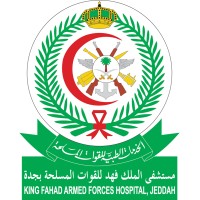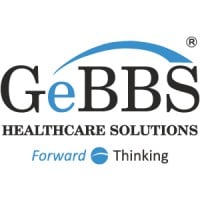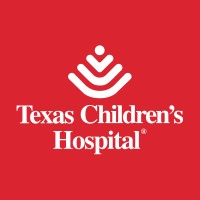
King Fahad Armed Forces Hospital Company Cyber Security Posture
http://kfafh.med.saThe King Fahd Armed Forces Hospital is situated in the busy seaport of Jeddah on the western seaboard of the Red Sea. Initially there was only a 76-bed Armed Forces Hospital in Jeddah. However, to meet the medical needs of the personnel of all of the Armed Forces Installations there, a new and progressive 420-bed Armed Forces hospital was directed to be built by His Royal Highness Prince Sultan bin Abdul Aziz Al Saud, Second Deputy Premier, Minister of Defense and Aviation and Inspector General. Now, the hospital has five city-wide satellite clinics form part of a KFAFHnational network of healthcare facilities directly managed by the Medical Services Division (MSD) of the Ministry of Defense and Aviation (MODA). One of the primary concerns of the Ministry of Defense and Aviation is to provide medical care to all of the Armed Forces personnel. Therefore, medical services have been establised in all military locations. The hospital provides a wide range of primary, secondary and tertiary medical services to members of the Saudi Arabian Armed Forces and their dependents. The Cardiac Center, situated within the main hospital, is the only adult cardiac surgical facility in the Western Region. In-service training and education are actively promoted by the Departments of Medical Education and Nursing Education and from within the individual departments. The programme includes a weekly hospital Grand Round, monthly Nursing Grand Rounds and regular nursing study days. Inter- and intra-departmental activities include seminars, case presentations and Journal Clubs. The hospital is also a designated training center for junior medical and nursing staff. All departments and units, both medical and non-medical, have written Policies and Procedures to ensure delivery of consistent levels of quality care and service.
KFAFH Company Details
king-fahad-armed-forces-hospital
10,001+ employees
12195
62
Hospitals and Health Care
http://kfafh.med.sa
Scan still pending
KIN_1678979
In-progress
Between 800 and 900
This score is AI-generated and less favored by cyber insurers, who prefer the TPRM score.
 KFAFH Global Score
KFAFH Global Score.png)

King Fahad Armed Forces Hospital Company Scoring based on AI Models
| Model Name | Date | Description | Current Score Difference | Score |
|---|---|---|---|---|
| AVERAGE-Industry | 03-12-2025 | This score represents the average cybersecurity rating of companies already scanned within the same industry. It provides a benchmark to compare an individual company's security posture against its industry peers. | N/A | Between 800 and 900 |
King Fahad Armed Forces Hospital Company Cyber Security News & History
| Entity | Type | Severity | Impact | Seen | Url ID | Details | View |
|---|
King Fahad Armed Forces Hospital Company Subsidiaries

The King Fahd Armed Forces Hospital is situated in the busy seaport of Jeddah on the western seaboard of the Red Sea. Initially there was only a 76-bed Armed Forces Hospital in Jeddah. However, to meet the medical needs of the personnel of all of the Armed Forces Installations there, a new and progressive 420-bed Armed Forces hospital was directed to be built by His Royal Highness Prince Sultan bin Abdul Aziz Al Saud, Second Deputy Premier, Minister of Defense and Aviation and Inspector General. Now, the hospital has five city-wide satellite clinics form part of a KFAFHnational network of healthcare facilities directly managed by the Medical Services Division (MSD) of the Ministry of Defense and Aviation (MODA). One of the primary concerns of the Ministry of Defense and Aviation is to provide medical care to all of the Armed Forces personnel. Therefore, medical services have been establised in all military locations. The hospital provides a wide range of primary, secondary and tertiary medical services to members of the Saudi Arabian Armed Forces and their dependents. The Cardiac Center, situated within the main hospital, is the only adult cardiac surgical facility in the Western Region. In-service training and education are actively promoted by the Departments of Medical Education and Nursing Education and from within the individual departments. The programme includes a weekly hospital Grand Round, monthly Nursing Grand Rounds and regular nursing study days. Inter- and intra-departmental activities include seminars, case presentations and Journal Clubs. The hospital is also a designated training center for junior medical and nursing staff. All departments and units, both medical and non-medical, have written Policies and Procedures to ensure delivery of consistent levels of quality care and service.
Access Data Using Our API

Get company history
.png)
KFAFH Cyber Security News
Mick Schumacher ruled out of Saudi Grand Prix
Mick Schumacher was ruled out of Sunday's Saudi Formula One Grand Prix after crashing heavily in qualifying and being flown to hospital in Jeddah for ...
New audit pinpoints causes of 'wasteful' unnecessary scans
Unnecessary radiological exams lead to a waste of resources, longer waiting lists, and significant delays in appointments, they added. At King ...
Three youths land in hospital after cops chase their bike
A hot chase by security patrol of a motorcycle ended in an accident and injuries to three Saudi youths riding the bike, with one of them slipping into coma.
Ewaan employees support a healthy cause
Ewaan Global Residential Company organized a 'We Are All United' campaign to donate blood for members of the armed forces stationed at the Saudi-Yemeni border.
Choppers bring patients to Al-Noor at a steady pace
About 10 cases were transported to the King Fahd Military Hospital in Jeddah and five others were moved to the King Abdullah Medical Complex in ...
KFAFH Inter-Department basketball tilt starts today
Divided into two brackets the 14 teams play a single robin eliminations in each bracket with the top 4 finishers of both brackets to advance in ...
Ghadeer Lanao Lakers crush Avengers in LBC Liga Pinoy
Avengers, a Syrian select team, got their baptism of fire in competitive basketball Filipino style as they went down in heavy defeat against ...

KFAFH Similar Companies

Cleveland Clinic
Cleveland Clinic, located in Cleveland, Ohio, is a not-for-profit, multispecialty academic medical center that integrates clinical and hospital care with research and education. Founded in 1921 by four renowned physicians with a vision of providing outstanding patient care based upon the principl

GeBBS Healthcare Solutions
GeBBS Healthcare Solutions is a KLAS rated leading provider of Revenue Cycle Management (RCM) services and Risk Adjustment solutions. GeBBS’ innovative technology, combined with over 14,000-strong global workforce, helps clients improve financial performance, adhere to compliance, and enhance the

Unimed BH
A Unimed-BH é a operadora que mais investe na saúde dos mineiros. São 6 milhões de consultas médicas, 120 mil internações hospitalares e 13 milhões de exames e terapias complementares realizados em um ano. E a Cooperativa está sempre inovando, com serviços diferenciados, como o Agendamento On-lin

South Eastern Sydney Local Health District (SESLHD)
Welcome to South Eastern Sydney Local Health District (SESLHD). Our vision is 'Working Together to Improve the Health and Wellbeing of our Community' which is patient focused and respects the diverse and developing health needs of our communities. At the CORE of our organisation is a set of values

Stanford Health Care
Stanford Health Care, with multiple facilities throughout the Bay Area, is internationally renowned for leading edge and coordinated care in cancer care, neurosciences, cardiovascular medicine, surgery, organ transplant, medicine specialties, and primary care. Throughout its history, Stanford has be

Texas Children's Hospital
Texas Children’s Hospital is a world-class pediatric facility, nationally recognized as a top children’s hospital, and voted one of the best places to work in Houston for nine years running. We’re committed to creating a healthy community for children by providing the best pediatric care possible, t

Frequently Asked Questions (FAQ) on Cybersecurity Incidents
KFAFH CyberSecurity History Information
Total Incidents: According to Rankiteo, KFAFH has faced 0 incidents in the past.
Incident Types: As of the current reporting period, KFAFH has not encountered any cybersecurity incidents.
Total Financial Loss: The total financial loss from these incidents is estimated to be {total_financial_loss}.
Cybersecurity Posture: The company's overall cybersecurity posture is described as The King Fahd Armed Forces Hospital is situated in the busy seaport of Jeddah on the western seaboard of the Red Sea. Initially there was only a 76-bed Armed Forces Hospital in Jeddah. However, to meet the medical needs of the personnel of all of the Armed Forces Installations there, a new and progressive 420-bed Armed Forces hospital was directed to be built by His Royal Highness Prince Sultan bin Abdul Aziz Al Saud, Second Deputy Premier, Minister of Defense and Aviation and Inspector General. Now, the hospital has five city-wide satellite clinics form part of a KFAFHnational network of healthcare facilities directly managed by the Medical Services Division (MSD) of the Ministry of Defense and Aviation (MODA). One of the primary concerns of the Ministry of Defense and Aviation is to provide medical care to all of the Armed Forces personnel. Therefore, medical services have been establised in all military locations. The hospital provides a wide range of primary, secondary and tertiary medical services to members of the Saudi Arabian Armed Forces and their dependents. The Cardiac Center, situated within the main hospital, is the only adult cardiac surgical facility in the Western Region. In-service training and education are actively promoted by the Departments of Medical Education and Nursing Education and from within the individual departments. The programme includes a weekly hospital Grand Round, monthly Nursing Grand Rounds and regular nursing study days. Inter- and intra-departmental activities include seminars, case presentations and Journal Clubs. The hospital is also a designated training center for junior medical and nursing staff. All departments and units, both medical and non-medical, have written Policies and Procedures to ensure delivery of consistent levels of quality care and service..
Detection and Response: The company detects and responds to cybersecurity incidents through {description_of_detection_and_response_process}.
Incident Details
Incident 1: Ransomware Attack
Title: {Incident_Title}
Description: {Brief_description_of_the_incident}
Date Detected: {Detection_Date}
Date Publicly Disclosed: {Disclosure_Date}
Date Resolved: {Resolution_Date}
Type: {Type_of_Attack}
Attack Vector: {Attack_Vector}
Vulnerability Exploited: {Vulnerability}
Threat Actor: {Threat_Actor}
Motivation: {Motivation}
Incident 2: Data Breach
Title: {Incident_Title}
Description: {Brief_description_of_the_incident}
Date Detected: {Detection_Date}
Date Publicly Disclosed: {Disclosure_Date}
Date Resolved: {Resolution_Date}
Type: {Type_of_Attack}
Attack Vector: {Attack_Vector}
Vulnerability Exploited: {Vulnerability}
Threat Actor: {Threat_Actor}
Motivation: {Motivation}
Common Attack Types: As of now, the company has not encountered any reported incidents involving common cyberattacks.
Identification of Attack Vectors: The company identifies the attack vectors used in incidents through {description_of_identification_process}.
Impact of the Incidents
Incident 1: Ransomware Attack
Financial Loss: {Financial_Loss}
Data Compromised: {Data_Compromised}
Systems Affected: {Systems_Affected}
Downtime: {Downtime}
Operational Impact: {Operational_Impact}
Conversion Rate Impact: {Conversion_Rate_Impact}
Revenue Loss: {Revenue_Loss}
Customer Complaints: {Customer_Complaints}
Brand Reputation Impact: {Brand_Reputation_Impact}
Legal Liabilities: {Legal_Liabilities}
Identity Theft Risk: {Identity_Theft_Risk}
Payment Information Risk: {Payment_Information_Risk}
Incident 2: Data Breach
Financial Loss: {Financial_Loss}
Data Compromised: {Data_Compromised}
Systems Affected: {Systems_Affected}
Downtime: {Downtime}
Operational Impact: {Operational_Impact}
Conversion Rate Impact: {Conversion_Rate_Impact}
Revenue Loss: {Revenue_Loss}
Customer Complaints: {Customer_Complaints}
Brand Reputation Impact: {Brand_Reputation_Impact}
Legal Liabilities: {Legal_Liabilities}
Identity Theft Risk: {Identity_Theft_Risk}
Payment Information Risk: {Payment_Information_Risk}
Average Financial Loss: The average financial loss per incident is {average_financial_loss}.
Commonly Compromised Data Types: The types of data most commonly compromised in incidents are {list_of_commonly_compromised_data_types}.
Incident 1: Ransomware Attack
Entity Name: {Entity_Name}
Entity Type: {Entity_Type}
Industry: {Industry}
Location: {Location}
Size: {Size}
Customers Affected: {Customers_Affected}
Incident 2: Data Breach
Entity Name: {Entity_Name}
Entity Type: {Entity_Type}
Industry: {Industry}
Location: {Location}
Size: {Size}
Customers Affected: {Customers_Affected}
Response to the Incidents
Incident 1: Ransomware Attack
Incident Response Plan Activated: {Yes/No}
Third Party Assistance: {Yes/No}
Law Enforcement Notified: {Yes/No}
Containment Measures: {Containment_Measures}
Remediation Measures: {Remediation_Measures}
Recovery Measures: {Recovery_Measures}
Communication Strategy: {Communication_Strategy}
Adaptive Behavioral WAF: {Adaptive_Behavioral_WAF}
On-Demand Scrubbing Services: {On_Demand_Scrubbing_Services}
Network Segmentation: {Network_Segmentation}
Enhanced Monitoring: {Enhanced_Monitoring}
Incident 2: Data Breach
Incident Response Plan Activated: {Yes/No}
Third Party Assistance: {Yes/No}
Law Enforcement Notified: {Yes/No}
Containment Measures: {Containment_Measures}
Remediation Measures: {Remediation_Measures}
Recovery Measures: {Recovery_Measures}
Communication Strategy: {Communication_Strategy}
Adaptive Behavioral WAF: {Adaptive_Behavioral_WAF}
On-Demand Scrubbing Services: {On_Demand_Scrubbing_Services}
Network Segmentation: {Network_Segmentation}
Enhanced Monitoring: {Enhanced_Monitoring}
Incident Response Plan: The company's incident response plan is described as {description_of_incident_response_plan}.
Third-Party Assistance: The company involves third-party assistance in incident response through {description_of_third_party_involvement}.
Data Breach Information
Incident 2: Data Breach
Type of Data Compromised: {Type_of_Data}
Number of Records Exposed: {Number_of_Records}
Sensitivity of Data: {Sensitivity_of_Data}
Data Exfiltration: {Yes/No}
Data Encryption: {Yes/No}
File Types Exposed: {File_Types}
Personally Identifiable Information: {Yes/No}
Prevention of Data Exfiltration: The company takes the following measures to prevent data exfiltration: {description_of_prevention_measures}.
Handling of PII Incidents: The company handles incidents involving personally identifiable information (PII) through {description_of_handling_process}.
Ransomware Information
Incident 1: Ransomware Attack
Ransom Demanded: {Ransom_Amount}
Ransom Paid: {Ransom_Paid}
Ransomware Strain: {Ransomware_Strain}
Data Encryption: {Yes/No}
Data Exfiltration: {Yes/No}
Ransom Payment Policy: The company's policy on paying ransoms in ransomware incidents is described as {description_of_ransom_payment_policy}.
Data Recovery from Ransomware: The company recovers data encrypted by ransomware through {description_of_data_recovery_process}.
Regulatory Compliance
Incident 1: Ransomware Attack
Regulations Violated: {Regulations_Violated}
Fines Imposed: {Fines_Imposed}
Legal Actions: {Legal_Actions}
Regulatory Notifications: {Regulatory_Notifications}
Incident 2: Data Breach
Regulations Violated: {Regulations_Violated}
Fines Imposed: {Fines_Imposed}
Legal Actions: {Legal_Actions}
Regulatory Notifications: {Regulatory_Notifications}
Regulatory Frameworks: The company complies with the following regulatory frameworks regarding cybersecurity: {list_of_regulatory_frameworks}.
Ensuring Regulatory Compliance: The company ensures compliance with regulatory requirements through {description_of_compliance_measures}.
Lessons Learned and Recommendations
Incident 1: Ransomware Attack
Lessons Learned: {Lessons_Learned}
Incident 2: Data Breach
Lessons Learned: {Lessons_Learned}
Incident 1: Ransomware Attack
Recommendations: {Recommendations}
Incident 2: Data Breach
Recommendations: {Recommendations}
Key Lessons Learned: The key lessons learned from past incidents are {list_of_key_lessons_learned}.
Implemented Recommendations: The company has implemented the following recommendations to improve cybersecurity: {list_of_implemented_recommendations}.
References
Additional Resources: Stakeholders can find additional resources on cybersecurity best practices at {list_of_additional_resources}.
Investigation Status
Incident 1: Ransomware Attack
Investigation Status: {Investigation_Status}
Incident 2: Data Breach
Investigation Status: {Investigation_Status}
Communication of Investigation Status: The company communicates the status of incident investigations to stakeholders through {description_of_communication_process}.
Stakeholder and Customer Advisories
Incident 1: Ransomware Attack
Stakeholder Advisories: {Stakeholder_Advisories}
Customer Advisories: {Customer_Advisories}
Incident 2: Data Breach
Stakeholder Advisories: {Stakeholder_Advisories}
Customer Advisories: {Customer_Advisories}
Advisories Provided: The company provides the following advisories to stakeholders and customers following an incident: {description_of_advisories_provided}.
Initial Access Broker
Incident 1: Ransomware Attack
Entry Point: {Entry_Point}
Reconnaissance Period: {Reconnaissance_Period}
Backdoors Established: {Backdoors_Established}
High Value Targets: {High_Value_Targets}
Data Sold on Dark Web: {Yes/No}
Incident 2: Data Breach
Entry Point: {Entry_Point}
Reconnaissance Period: {Reconnaissance_Period}
Backdoors Established: {Backdoors_Established}
High Value Targets: {High_Value_Targets}
Data Sold on Dark Web: {Yes/No}
Monitoring and Mitigation of Initial Access Brokers: The company monitors and mitigates the activities of initial access brokers through {description_of_monitoring_and_mitigation_measures}.
Post-Incident Analysis
Incident 1: Ransomware Attack
Root Causes: {Root_Causes}
Corrective Actions: {Corrective_Actions}
Incident 2: Data Breach
Root Causes: {Root_Causes}
Corrective Actions: {Corrective_Actions}
Post-Incident Analysis Process: The company's process for conducting post-incident analysis is described as {description_of_post_incident_analysis_process}.
Corrective Actions Taken: The company has taken the following corrective actions based on post-incident analysis: {list_of_corrective_actions_taken}.
Additional Questions
General Information
Ransom Payment History: The company has {paid/not_paid} ransoms in the past.
Last Ransom Demanded: The amount of the last ransom demanded was {last_ransom_amount}.
Last Attacking Group: The attacking group in the last incident was {last_attacking_group}.
Incident Details
Most Recent Incident Detected: The most recent incident detected was on {most_recent_incident_detected_date}.
Most Recent Incident Publicly Disclosed: The most recent incident publicly disclosed was on {most_recent_incident_publicly_disclosed_date}.
Most Recent Incident Resolved: The most recent incident resolved was on {most_recent_incident_resolved_date}.
Impact of the Incidents
Highest Financial Loss: The highest financial loss from an incident was {highest_financial_loss}.
Most Significant Data Compromised: The most significant data compromised in an incident was {most_significant_data_compromised}.
Most Significant System Affected: The most significant system affected in an incident was {most_significant_system_affected}.
Response to the Incidents
Third-Party Assistance in Most Recent Incident: The third-party assistance involved in the most recent incident was {third_party_assistance_in_most_recent_incident}.
Containment Measures in Most Recent Incident: The containment measures taken in the most recent incident were {containment_measures_in_most_recent_incident}.
Data Breach Information
Most Sensitive Data Compromised: The most sensitive data compromised in a breach was {most_sensitive_data_compromised}.
Number of Records Exposed: The number of records exposed in the most significant breach was {number_of_records_exposed}.
Ransomware Information
Highest Ransom Demanded: The highest ransom demanded in a ransomware incident was {highest_ransom_demanded}.
Highest Ransom Paid: The highest ransom paid in a ransomware incident was {highest_ransom_paid}.
Regulatory Compliance
Highest Fine Imposed: The highest fine imposed for a regulatory violation was {highest_fine_imposed}.
Most Significant Legal Action: The most significant legal action taken for a regulatory violation was {most_significant_legal_action}.
Lessons Learned and Recommendations
Most Significant Lesson Learned: The most significant lesson learned from past incidents was {most_significant_lesson_learned}.
Most Significant Recommendation Implemented: The most significant recommendation implemented to improve cybersecurity was {most_significant_recommendation_implemented}.
References
Most Recent Source: The most recent source of information about an incident is {most_recent_source}.
Most Recent URL for Additional Resources: The most recent URL for additional resources on cybersecurity best practices is {most_recent_url}.
Investigation Status
Current Status of Most Recent Investigation: The current status of the most recent investigation is {current_status_of_most_recent_investigation}.
Stakeholder and Customer Advisories
Most Recent Stakeholder Advisory: The most recent stakeholder advisory issued was {most_recent_stakeholder_advisory}.
Most Recent Customer Advisory: The most recent customer advisory issued was {most_recent_customer_advisory}.
Initial Access Broker
Most Recent Entry Point: The most recent entry point used by an initial access broker was {most_recent_entry_point}.
Most Recent Reconnaissance Period: The most recent reconnaissance period for an incident was {most_recent_reconnaissance_period}.
Post-Incident Analysis
Most Significant Root Cause: The most significant root cause identified in post-incident analysis was {most_significant_root_cause}.
Most Significant Corrective Action: The most significant corrective action taken based on post-incident analysis was {most_significant_corrective_action}.
What Do We Measure?
















Every week, Rankiteo analyzes billions of signals to give organizations a sharper, faster view of emerging risks. With deeper, more actionable intelligence at their fingertips, security teams can outpace threat actors, respond instantly to Zero-Day attacks, and dramatically shrink their risk exposure window.
These are some of the factors we use to calculate the overall score:
Identify exposed access points, detect misconfigured SSL certificates, and uncover vulnerabilities across the network infrastructure.
Gain visibility into the software components used within an organization to detect vulnerabilities, manage risk, and ensure supply chain security.
Monitor and manage all IT assets and their configurations to ensure accurate, real-time visibility across the company's technology environment.
Leverage real-time insights on active threats, malware campaigns, and emerging vulnerabilities to proactively defend against evolving cyberattacks.




